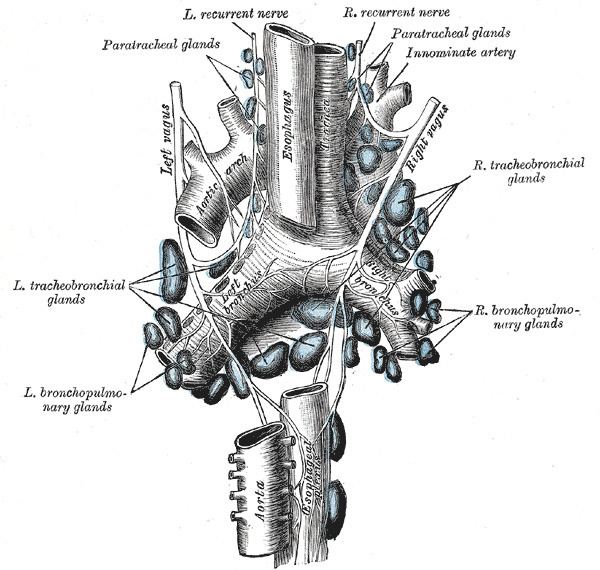Latin plexus oesophageus FMA 6225 | TA A14.2.01.173 | |
 | ||
To esophagus(same fibers make up the cardiac plexus | ||
The esophageal plexus is formed by nerve fibers from two sources: 1.branches of the vagus nerve 2.visceral branches of the sympathetic trunk. The esophageal plexus and the cardiac plexus contain the same types of fibers and are both considered thoracic autonomic plexus(es).
Contents
Parasympathetic Fibers
1. The Vagus nerve delivers two fiber types to the esophageal plexus:
Note: These vagal fibers in the esophageal plexus reform to make the anterior vagal trunk (left vagus) and the posterior vagal trunk (right vagus). Anterior and posterior being terms in relation to the esophagus, a mnemonic for which is 'LARP': Left becomes Anterior, Right becomes Posterior.
Sympathetic Fibers
2. The visceral branches of the sympathetic trunk also deliver two fiber types to the esophageal plexus
References
Esophageal plexus Wikipedia(Text) CC BY-SA
